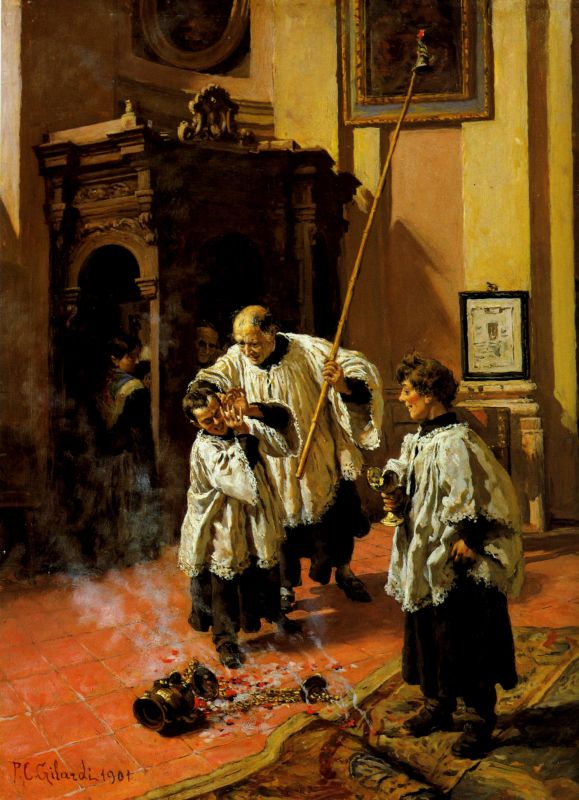The ban on violence in school as a punitive method was reiterated in the regulations R.D. no. 653 of May 4, 1925, and R.D. no. 1297 of April 26, 1928, passed under Fascism.¹² However, in spite of the explicit prohibition on the use of violence, the memoirs of former teachers and pupils reveal that corporal punishment was a common practice.
To explain this discrepancy in the enforcement of scholastic regulation in rural schools, it is necessary to look at the Italian society of the time. Italy during the Fascist period was mainly rural and its working population largely consisted of farmers with little or no education. While attending primary school was mandatory, children often used to play truant from classes — either willingly or due to compulsion by their parents — to help their families on their farms.
[…]
This social approval was in concordance with two legal issues that further undermined the ban on corporal punishment. On the one hand, teachers were rarely penalised for disregarding regulations and using corporal punishment. Evidence suggests that teachers were reprimanded only in certain extreme cases.
On the other hand, penal codes such as the 1930 Rocco Code contradicted existing scholastic regulations on corporal punishment. Articles 571 (e.g. ‘Abuse as a means of correction or discipline’) and 572 (e.g. ‘Familial abuse of children’), in particular, made it lawful for educators to physically punish children. Teachers were penalised only when the punishment caused illness, injury or death.¹⁵
By way of this law, any person or child under the authority of another could duly receive physical punishment for any disorderliness or misconduct. The juridical justification of violence against such subordinates as children and women in the home and in the classroom reflected the Fascist values of hierarchy ingrained within a rigid idea of the family and, more generally, of the society.
[…]
Although expressly prohibited, physical violence was widely used in classrooms during Fascism. Several eyewitness memoirs recall the details of such brutality in classrooms. These memoirs provide examples of punishments used in classrooms and illustrate cases of slapping, beating with a stick, pulling children’s ears, kicking, making children stretch out their arms or stand behind the blackboard for a long time, and making them kneel on dried chickpeas or corn.
It might be expected that teachers’ memoirs would not report the use of physical punishment due to its non‐compliance with the regulations, but this is not the case. The lack of remorse or shame in reporting these violent events in memoirs shows us how these practices were not only commonly accepted at school and at home, but also endured over time. The personal accounts of the past disclose an authoritarian system wherein punishments were considered to be an efficient means of educating pupils and expressing a teacher’s power.
(Emphasis added.)
Click here for events that happened today (February 11).
1929: Rome and the Holy See signed the Lateran Pacts.
1933: The SA, in the Rhineland, were sworn in as police auxiliaries.
1935: Berlin issued the order for the construction of Dithmarschen.
1937:
General Luis Orgaz’s Spanish Nationalist forces drove off General Sebastian Pozas’ forces eastward across the River Jarama near Madrid.
1938: Austrian Chancellor Kurt Schuschnigg secretly went to Salzburg, Austria by car for a meeting with Reich leaders while King Carol II announced the new 1938 Constitution of Romania, which concentrated powers in the throne.
Corporal punishment is CSA.
EDIT: I read corporal punishment and assumed spanking, my mistake. I stand by that point and say that the “punishments” described here are abuse as well. Preaching to the choir, I know.


